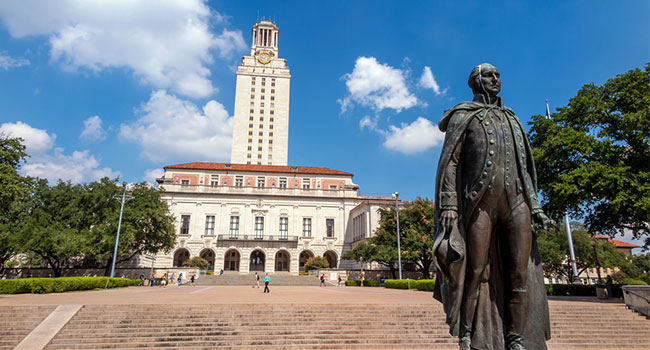
Violent Incidents on UT Campus Leads to Improved Security
The University of Texas has stepped up its safety and security following violent incidents on campus.
- By Sydny Shepard
- May 02, 2018
University of Texas police are upgrading security, adding campus safety professionals and learning to communicate better in the wake of the two deaths on campus since 2016.
In April 2016, a freshman, Haruka Weiser, was found dead in a creek on campus near the Alumni Center. According to court documents she was assaulted and killed by a homeless teenager, who was later charged with her murder.
In May 2017, a stabbing spree on campus killed Harrison Brown and injured three other students. A student from the campus was arrested and charged for the crimes.
This week marks the first anniversary of the stabbing spree and UT campus police and safety officials want students to know they should feel safe. In a letter send to students this week, the schools police chief and vice president of safety wrote about how the school is continuously striving to improve safety on the campus.
After the murder in April 2016, UTPD, along with the Texas Department of Public Safety, conducted a safety audit to determine where security gaps were. Since then, UTPD has increased its police force from 67 officers to 104. Campus safety leaders explained that the stabbing in May 2017 accelerated the momentum behind the changes already in progress.
Other changes include UTPD working a lot more closely with the Austin Police Department, allowing UTPD to receive an broadcast updates about crimes that happen in West campus. UTPD has also added a communications officer who will help UTPD take in more information about and share information with the campus community. UTPD has expanded patrols, staffed more officers in West Campus and are doing more community policing to build the trust of students.
In addition to patrols and communication, the university also implemented a major security overhaul.
The university is installing "celebrated entrances" at all buildings on the main campus. That means that after hours, there will only be one point of entry to campus buildings which will only be accessible by students, faculty and staff with a key card.
Inside the entrance is a "safety hub" which will contain an AED, a hemorrhage response kit, an emergency call button and clearly marked address information. Overlooking the entrance will be a camera to gather surveillance footage.
To cut down on crime, the university is also increasing lighting on campus and in off-campus communities where students live. UT is also working to cut down on plants around campus that get in the way of visibility.
While many of these changes are already complete, the whole security overhaul should be updated by September 2018.
About the Author
Sydny Shepard is the Executive Editor of Campus Security & Life Safety.